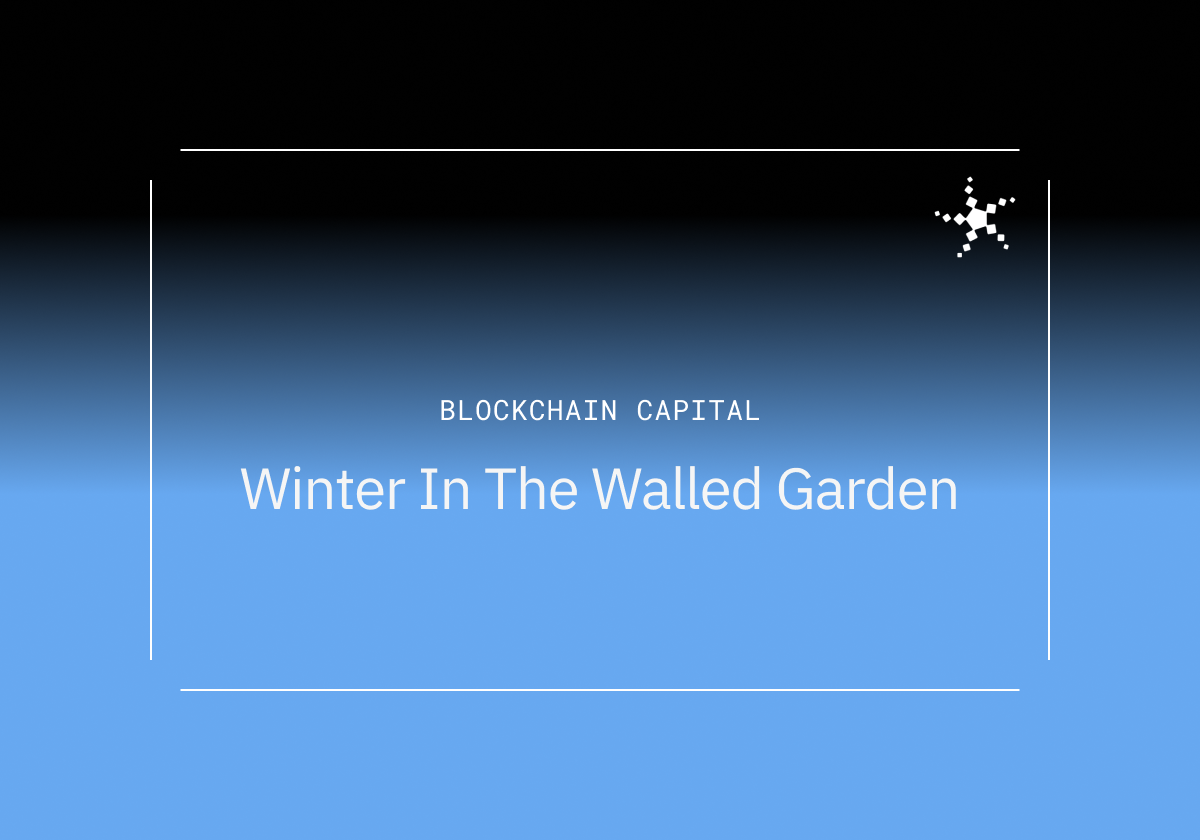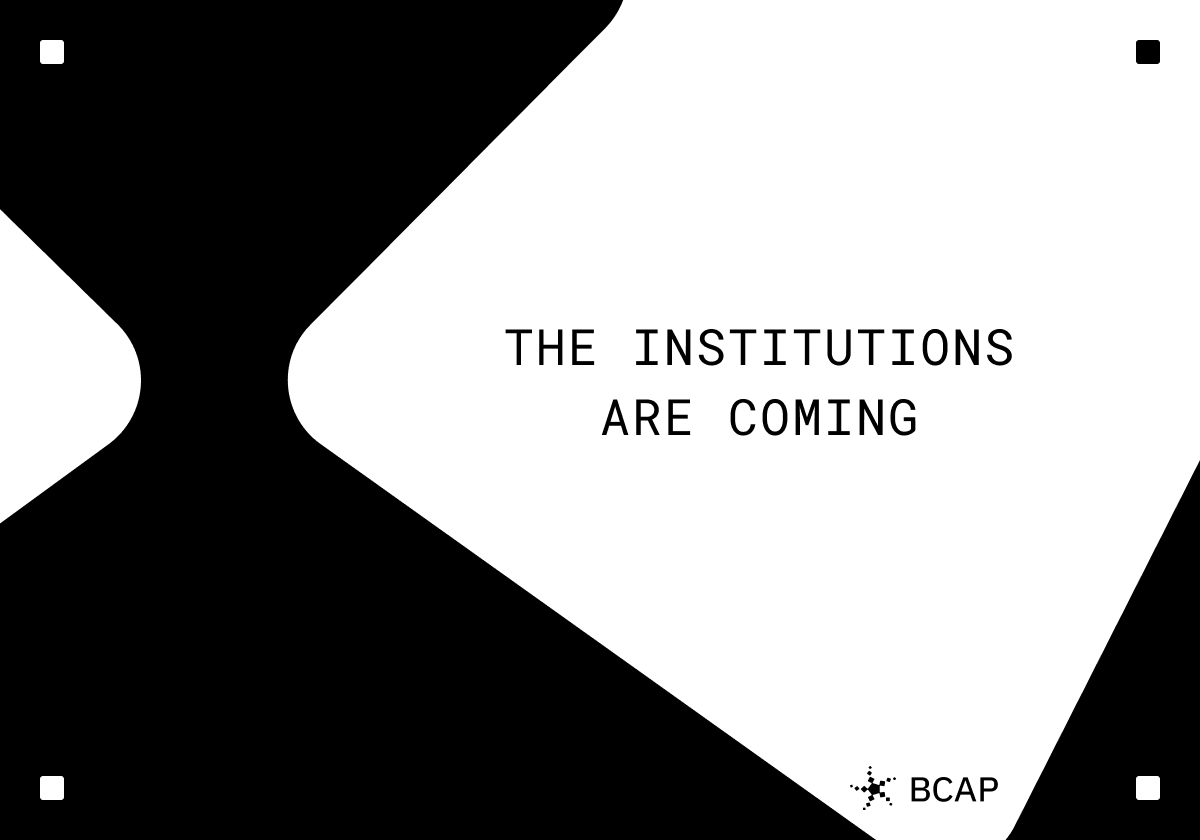
Crypto’s Creator Model
With the maturation of social media networks, user-generated content and participation are more mainstream than ever. Yet value does not proportionally accrue to the users contributing, and often building, the network. When users have skin in the game, economic and intrinsic incentives are re-imagined. Crypto networks, and corresponding tokens, enable this dynamic.
The Rules of the Internet Today
Centralized platforms rule the internet. Amazon, Apple, Facebook and Google dictate the rules upon which the world uses and interfaces with the internet. You want to launch an app, you pay the toll of the App Store. Platforms hold power over its users.
With the rise of blogging, influencers, and now “creators” exist across virtually any vertical — users are not just creating content. They are building communities and successful businesses. There’s also been a shift in the behavior of communities. Attention is scarce and communities are increasingly niche. They vary by motivations, size, quality, and engagement. However, as niche communities evolved the relationship between users and creators became bidirectional, with value flowing from both sides. For example, Glossier famously began with Emily Weiss’s blog Into the Gloss crowdsourcing product direction. However, users are providing feedback for free and engaging without any direct monetary gain.
Current State of Creators
As a society, employment incentives are clear. Employers hire employees and provide them with a salary, and in some cases, profit sharing or equity. This accomplishes two things — first, it creates incentives where employees are rewarded for increasing the value of a company. Second, it encourages loyalty with vesting periods.
Another model, though less popular today, is of a co-operative. These businesses are owned and managed entirely by those who benefit and participate in the services provided. For example, Bob’s Red Mill is a whole grain foods business owned and operated by its employees out of Oregon. The company generates over $100M in revenue.
There’s a new, albeit broken model, of individual entrepreneurs filled by internet opportunities. Creators are making content across multiple platforms, taking their fanbase with them, careful not to rely on one platform only. In some cases, a creator can generate revenue from 5+ streams. While some have sought out owning their platform from day one (e.g., Ben Thompson) most rely upon these social channels to make money. There are two models for creators that have been popularized today:

In the first phase, the main objective was scale. Influencers, YouTubers and bloggers amassed hundreds of thousands of followers, in some cases, millions. A majority of these creators monetized their audience with advertisements and product placements. The relationship here is largely creator-driven, with fan engagement limited to comments and fan accounts. The platforms are built for general-purpose, with massive fan bases across many topics.
As the internet grew larger, people were driven towards more personalized platforms. In the past few years, we’ve seen the rise of “The Passion Economy” where platforms support specific niches around artists, podcasters, newsletters, and more. These platforms generate revenue similar to SaaS products as highly engaged user bases have proven to be willing to pay for content. The same content that was previously “free” now operates with a freemium model. Creators are more in control than ever — owning their distribution.
However, user-generated content is a form of currency on the internet. Fan empowerment and user contributions to networks are still not being rewarded. Unlocking ownership and economic incentives may be the future of the creator space.
Ownership as a Design Goal
User participation and rewards at the onset can change the dynamics between creators, users, and their network. In this model, the aggregators (e.g., Facebook, Youtube) don’t capture a majority of the value. The creators are also not the only ones to benefit from the model. Instead, users earn value generated by the network based on their contributions. This is an idea not exclusive to cryptonetworks — Airbnb’s founder famously considered giving hosts Airbnb’s equity. However, this model hasn’t been fully realized. Importantly, ownership is a design choice, not the product itself. Crypto networks are one way to achieve this model. In a world optimized to create these networks, the creator model may look like this:

There are three common characteristics of any user-owned network. The first is grassroots community organization. The second is strong network effects. Lastly, are the novel economic incentives and programmable revenue streams that may emerge.
Grassroots Community Organization
User-owned networks are not top driven. Instead, they are typically created in a grassroots manner. Early adopters are often enthusiasts and technologists who are excited about the token incentives. In order to kickstart any network, a dedicated community is required to sustain progress and development. The principal of 1000 true fans is all it takes to jumpstart a community.
Strong Network Effects
User owned networks create economic incentives through ownership and rewards. Over time, this can lead to stronger networks in a few specific areas:
- User retention — an increase in user value is reflected in retention. Retention in crypto networks can rudimentarily be measured by count of token holders and participation. If early users are rewarded for their initial risk on the platform (with price appreciation) they are more likely to be embedded into the platform. New users experience a larger & potentially more useful network as early adopters bootstrap.
- Power user curves — crypto networks reward power users; those who contribute a ton of value to the network. Incentive mechanisms like yield farming and liquidity mining are examples of how this might deepen engagement with early user bases. The question comes down to the sustainability of these users over time.
The network effects of Bitcoin and Ethereum are proof that the collective user base can scale and ultimately reap the value generated by the network. These networks favor seniority (early entry will generate a greater reward) and meritocracy (greater contributions will earn more).
Programmable Economic Incentives & Access
With creator & fan empowerment, there are opportunities to create programmable economic incentives. Programmable smart contracts mean value can exchange hands in a way that is difficult with cash or existing payments infrastructure. Code can execute according to a set of predetermined rules and value will correspondingly move. To illustrate here’s an example. Imagine a digital artist makes and sells their artwork online. Here are a few ways crypto assets could be utilized:
- Consumers buy digital art with key properties (e.g., digital scarcity)
- In the future, secondary sales & transactions automatically share revenue with the digital artist and the owner of the art — ensuring both are rewarded.
- A digital art gallery (e.g., online showcase) can be owned & controlled via a governance token, providing artists voting rights for key decisions such as listing artwork online
This is just the tip of the iceberg. Value creation benefits both producers and users.
Programmable access is the second component. Whether it be tokenized access to moderation or particular group chats — becoming a token holder can open levels of engagement automatically. Governance could trigger certain parameters, without the explicit need of the original content creator. Programmable access curates the internet in a way unlike ever before.
Enabling Ownership
In order to enable ownership, marketplaces and creator tools are emerging. Ownership requires infrastructure such as token issuance, management, and trading. While there is no singular model — many products are experimenting with how tokens will accrue value. Binance pioneered a token which redistributes revenue to holders. Compound launched its governance token, COMP, for users to manage protocol decisions. Reddit launched coins for rewarding active Reddit users with loyalty badges and points. Foundation allows artists to tokenize their revenue streams so they can generate new streams of revenue from the sale of their art. The design space here is wide open as community-owned network models become popular. Today, there are two main categories supporting this space: marketplaces & creator tools.

Marketplaces & Platforms
Marketplaces like Foundation and Zora allow creators to tokenize their projects and then sell or redeem them for goods/services online. The token itself is a digital + programmable representation of their work. The nature of these tokens provides revenue for creators while also enabling programmatic revenue streams. Marketplaces & platforms are focused on providing users and creators economic incentives and participatory rewards.
Creator Tools
Tools like Roll and Rally are building out infrastructure for creators to issue their own currency, manage their communities and engage with their users. Roll, for example, offers a token issuance platform for communities. Rally recently launched Creator Coin to help influencers run their virtual economies. It allows influencers to monetize everything from fan shout outs to access.
As ownership becomes increasingly expected and desired, we are likely to see the emergence of a new set of tools to facilitate this. Everything from custody to compliance software could become part of this new stack. The opportunity above is specific to creators — everything from music to art and writing. However, in the crypto community, this model is already being applied to financial networks like Compound and Uniswap.
Tokens in the Wild
We are beginning to see the early days of creators launching community tokens via these tools and infrastructure. As a case study, we can consider the $JAMM token, created by Brian Flynn for his community. Issued via the Roll infrastructure, the $JAMM token currently trades at a price of $0.07, with a ~$300K market cap. The community token provides token holders exclusive access to his newsletter content, discussions, and more. Over time, one can imagine Brian will get increasingly creative with token holder rewards and introduce levels of scarcity as well as access for the token.
Where do we go from here?
We posit that crypto networks facilitate stronger relationships between creators and users. These relationships will introduce economic rewards and incentives to strengthen network effects. Monetization of activities like streaming, gaming, writing, etc. could become increasingly diverse. With ownership as a design choice, the incentives are aligned such that fans are empowered as creators grow. This model represents an equitable way to distribute value across networks — an opportunity largely missed by Web 2.0 platforms.
Many thanks to Shishi Feng, Spencer Bogart and Brian Flynn for reviewing drafts & helpful conversations
Disclosures: Blockchain Capital is an investor in several of the protocols mentioned above. The views expressed in each blog post may be the personal views of each author and do not necessarily reflect the views of Blockchain Capital and its affiliates. Neither Blockchain Capital nor the author guarantees the accuracy, adequacy or completeness of information provided in each blog post. No representation or warranty, express or implied, is made or given by or on behalf of Blockchain Capital, the author or any other person as to the accuracy and completeness or fairness of the information contained in any blog post and no responsibility or liability is accepted for any such information. Nothing contained in each blog post constitutes investment, regulatory, legal, compliance or tax or other advice nor is it to be relied on in making an investment decision. Blog posts should not be viewed as current or past recommendations or solicitations of an offer to buy or sell any securities or to adopt any investment strategy. The blog posts may contain projections or other forward-looking statements, which are based on beliefs, assumptions and expectations that may change as a result of many possible events or factors. If a change occurs, actual results may vary materially from those expressed in the forward-looking statements. All forward-looking statements speak only as of the date such statements are made, and neither Blockchain Capital nor each author assumes any duty to update such statements except as required by law. To the extent that any documents, presentations or other materials produced, published or otherwise distributed by Blockchain Capital are referenced in any blog post, such materials should be read with careful attention to any disclaimers provided therein.
No Results Found.








.jpg)



.png)
.png)
